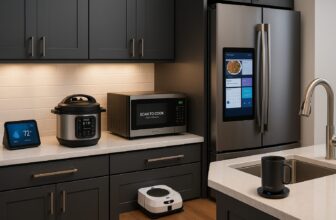

David Brown’s Aston Martin concern held out for every possible sale before discarding a car design, thus hoping to realize maximum return on investment. This helps explain why the DB2 family lasted seven years and the DB4 generation lasted 12.
Thus, when the Aston Martin DBS arrived in September 1967, it was only the third truly new Aston Martin in 18 years. Even then, it wasn’t all-new, for many of its details came straight from the existing DB6.
Work on the Aston Martin DBS began in 1966, a year that saw Aston’s fortunes at a low ebb. Touring, the firm’s Italian design and body contractor, suffered a financial collapse just after it had completed a pair of promising prototype coupes now known as DBSC, while a government credit squeeze in England deflated expected demand for costly cars like the DB6. Brown, however, could still afford his “bit of fun” and put the rush on yet another new model.
This styling assignment was handed to the ambitious, young William Towns, who’d been hired at Newport Pagnell only to design seats. Towns knew that Brown wanted not only a new Aston coupe but also a new Lagonda sedan as well, so he conjured up two closely related proposals, one for each model, differing mainly in wheelbase and roof and nose styling.
By sheer persistence, Towns got his coupe approved. (The erstwhile Lagonda only progressed as far as a couple of prototypes.) Towns left plenty of under hood space for a brand-new V-8 then in development, though it wouldn’t materialize until 1969.
Because capital reserves were low and the sense of urgency high, the new DBS (the “DB7” designation was ruled out to emphasize just how new) rode the DB6 chassis, albeit with an extra inch of wheelbase and a significant 4.5 inches of front and rear track.
Front suspension and the still-optional power steering were remained the same, but engineer Harold Beach finally won his battle for a De Dion rear suspension. Running gear — standard and Vantage engines with manual or automatic transmission — were also per DB6.
Though the new fastback coupe body showed familiar Aston shapes in its grille and side window openings, it had a crisp, clean “extruded” look, with curved bodysides and a rather angular superstructure that nevertheless harmonized well. Quad headlamps were set within a full-width eggcrate grille and center-lock wire wheels were on hand — or rather, on ground — as usual.
Overall, there was no trace of Italian influence, yet the DBS was as smart and modern as anything from Turin and offered significantly more passenger space than the DB6.
Because of its bulk, the Aston Martin DBS was unavoidably heavier than the DB6 — by a whopping 510 pounds — so its performance and gas mileage were predictably worse. Still, it could do nearly 150 mph flat out, 0–60 mph acceleration remained respectable at 8.5 seconds and roadholding was excellent.
On the downside, handling was cumbersome without the optional power steering. In fact, all controls — shifter, steering, brakes — demanded somewhat “masculine” effort, a good description of Aston character if plainly sexist. Fuel consumption declined to an appalling 10 miles per U.S. gallon, though few worried about it much because gas was still plentiful and cheap.
The promised V-8 duly appeared in a companion model called DBS-V8 (which later prompted some to dub the six-cylinder version “DBS-6”). However, the DBS continued, albeit with no significant changes, until 1972.
That just happened to be a watershed year for Aston Martin Lagonda, as David Brown stopped having “fun” and sold his interests to Company Developments, Ltd. At that point, the DBS was renamed Vantage and received the 325-bhp engine as standard equipment. It also got a mild facelift, with larger dual headlights flanking a narrowed grille bearing a simple black mesh insert.
The Vantage died after 14 months, lasting through July 1973 and accounting for a mere 70 of the total DBS-series production run of 857 units. With it died the splendid Aston Martin twincam six, sad to say. All subsequent Astons have used the 1969-vintage V-8.








